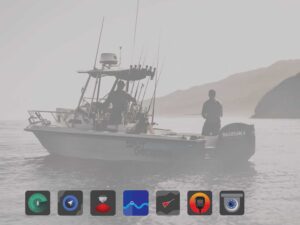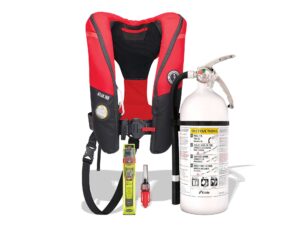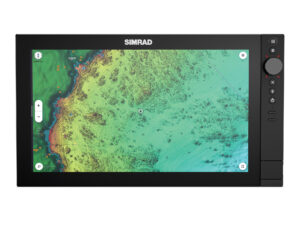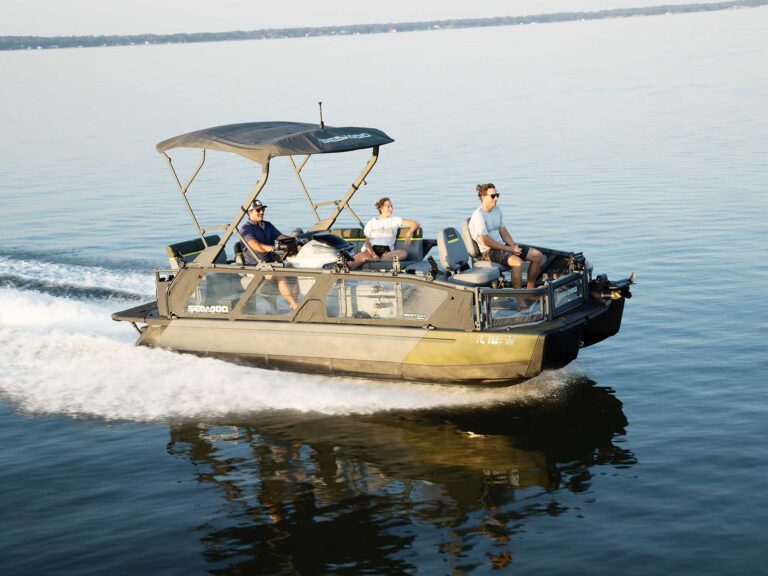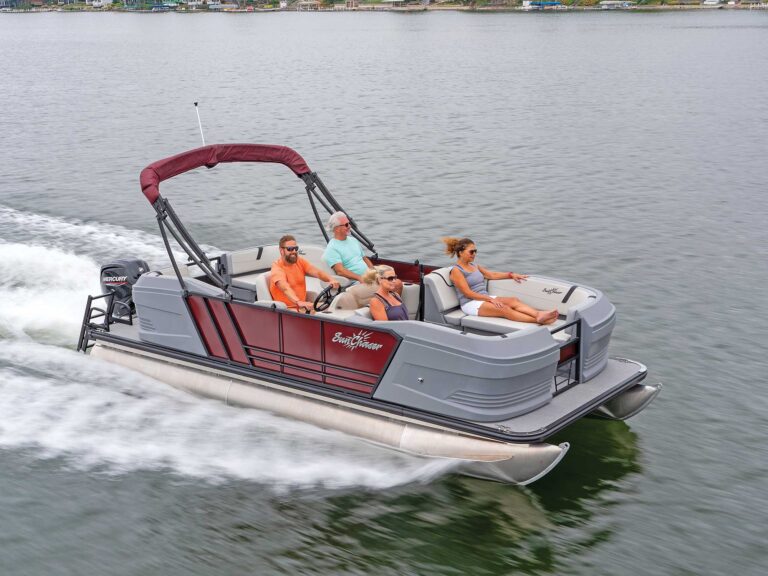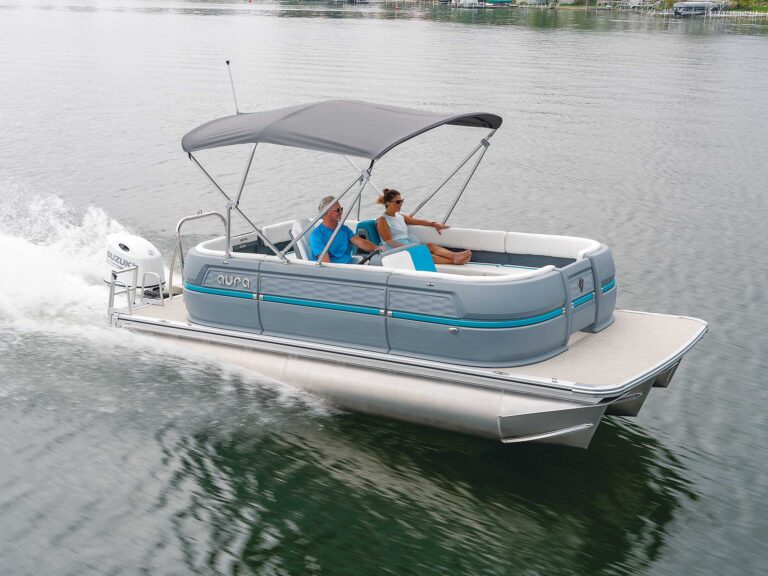Knowing that there’s more to a good cover than color-coordinated fabric, we called the pros at Commercial Sewing in Torrington, Connecticut, to develop this list of things that mark a quality cover, regardless of brand.
1. Tight Is Right
“A custom fit allows the cover to perform better over time,” Commercial Sewing’s Greg Perosino says. “If you’re using tie-down straps, snaps or a roped hem to keep the cover on the boat, it’s never going to fit well enough to repel water.” The company’s ratchet system tightens the cover like a skin.
2. To Dye For
Virtually every cover seems color-matched to its boat. When purchasing a cover, demand that it be made from solution-dyed polyester filament into which the color is forced. The color of solution-dyed “fabric” covers may leach and stain upholstery and gelcoat. Specifics can vary within a fabric maker’s lineup, so asking by brand alone isn’t sufficient.
3. Thank You for Your Support
Where the cover contacts hard edges such as a windshield frame, it should be reinforced on the underside. Look for either plastic or white feltlike batting. This material can also keep dye from leaching onto an aluminum windshield frame.
4. Pourquoi Pas?
A French-style seam or stitching process is not the preferred technique for a boat cover. Top stitching, in which the top piece of fabric rolls over the bottom before being sewn, cleanly sends water over the seam. In a French stitch, the two pieces of the fabric butt up against each other, allowing water to flow into the seam. That’s “why not.”
5. Poling Station
On boats up to 25 feet long, you should have two support poles, one in the bow and one centrally positioned in the cockpit. Sometimes, with more open layouts, such as those of a pontoon boat or deck boat, three poles are preferred. Ski boats with a central motor box will have two poles, one in front of and one abaft the box.
6. Holy Moly
If your boat has a Bimini top or wakeboard tower, the cover needs raised collars that fasten around the stanchions. Covers that just have holes the stanchions go through will ensure that your boat’s interior gets soaked. In the absence of a raised collar, a flap secured with Velcro-style fasteners might suffice.
Myth Bust
You’ve heard boaters complain that their boat’s cover creates condensation. But a cover only traps an environment. If you put the boat away wet, it will be damp when you uncover it the next time.

